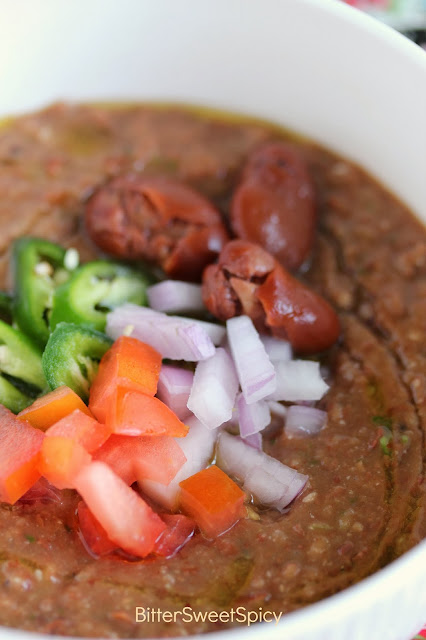I first tasted Persian food about 15 years ago in Maryland, USA where I used to live. Back then, there were not many halal food outlets in my neighbourhood. The only ones I was aware of were a Chinese Muslim, an Indian & a Persian & the Persian outlet was the nearest to my place. (A few weeks ago, I was just curious, so I googled & apparently, the restaurant, Mediterranean House of Kabob, is still around!) I often went there with my daughters (my only children then) on weekdays after school because there was really no choice for us if we decided to eat out... but we didn't mind because my daughters & I loved the food, so much so, I made sure we dropped by the place for the last time the day before we left the country for good. I also wanted to let the restaurant owner know that we were leaving...
There were a few types of kabob served at the restaurant but our favourite was kabab koobideh (grilled ground meat on skewers) served with rice or pita & cucumber yogurt sauce. And today, we had home-cooked kabab koobideh & chelo (steamed rice, Persian-style). My family loves the kabab & rice. I think adding the sumac to the meat makes a difference as it gives the authentic middle eastern flavour. I bought my sumac powder from Mustaffa a few weeks ago. I'm also amazed by how delicious the chelo is, although it is basically just white rice with butter. And, if you have not tried grilled tomatoes before, I say you should try it because it is so much better than raw or overcooked tomatoes!
Before I leave you with the recipes, I 'd like to wish all BitterSweetSpicy readers Happy New Year! Thank you for supporting my blog & FB Page & have a wonderful 2014!
Kabab Koobideh
Adapted from recipes by Fauzia's Kitchen Fun & Turmeric & Saffron.
Ingredients:
1 kg ground beef (mixture of lean & fat)
1 large onion - grated (squeeze out the juice, if any)
1 small bunch coriander (leaves with stems) - chopped
1 tbsp sumac powder
1 1/2 tsp salt
2 tsp black pepper powder
For Grilled Vegetables:
4 medium firm and ripe tomatoes, cut in halves
2 medium onions, quartered
2 capsicums, sliced
Method:
- In a large bowl, combine all the ingredients and mix well with your hands until the mixture becomes well blended. Cover the bowl & leave it in the fridge overnight to ensure that the meat is well marinated.
- Divide the mixture into portions (I made 10 portions). Take each portion & shape into an oval. Then place it on a flat and long metal or wooden skewer and press onto the skewer. Do the same with the rest of the portions. (The thickness and the length of the kababs depend on your preferences.)
- Heat up the grill (I used a grill pan.), making sure that it is very hot. Then place the skewers on the grill. Turn each skewer over quickly and continue to do so until the meat cooks & turns brown on both sides.
- To grill the vegetables, place them directly onto the hot grill or place them on thin metal or wooden skewers and grill for a few minutes.
Chelo
Recipe by Maideh Mazda from In a Persian Kitchen.
Ingredients:
2 1/2 cups rice - I used basmati rice.
1 1/2 tbsp salt
2 litres water
2 tbsp salt
1/2 cup butter (melted)
saffron - mixed with hot water (optional)
Method:
Recipe by Maideh Mazda from In a Persian Kitchen.
Ingredients:
2 1/2 cups rice - I used basmati rice.
1 1/2 tbsp salt
2 litres water
2 tbsp salt
1/2 cup butter (melted)
saffron - mixed with hot water (optional)
Method:
- Wash rice three times in lukewarm water & then soak in cold water of which 1 1/2 tbsps of salt have been added. Use enough cold water to cover the rice. This rice should be soaked overnight (in a pinch, 1 or 2 hours' soaking will suffice).
- Boil 2 litres of water of which 2 tbsps of salt have been added.
- Pour off the water in which the rice has been soaked. Add rice to the boiling water & boil it for 10-15 minute. (Stir rice with spoon once or twice to prevent the grains from sticking together.)
- Pour the rice & water into a strainer & rinse with lukewarm water.
- Put 1/3 of the melted butter into the bottom of the pot in which you have cooked the rice. Add 2 tbsps of water to the butter in the pot.
- take a spoonful of rice at a time & put it in hot pot, distributing it evenly. Allow it to mount into a cone shape.
- Pour the rest of the butter (& saffron, if using) over the rice, distributing it evenly.
- Put paper towel over the pot. Cover & put 2 or 3 dish towels on the lid. Cook for 10-15 minutes on medium fire. Lower the fire & cook for 35-40 minutes on low fire.
- By putting dish towels over the lid, the rice will cook more evenly throughout.
- If the rice is cooked at the right temperature, the rice will form a crust at the bottom of the pot which will become crisp & turn into golden brown, while the rest of the rice remains white. If desired, add more melted butter before serving.
- When serving rice, put 2-3 tablespoons of rice in a dish & add to it 2 tbsps of saffron. Mix it well & decorate the chelo with this rice.






































